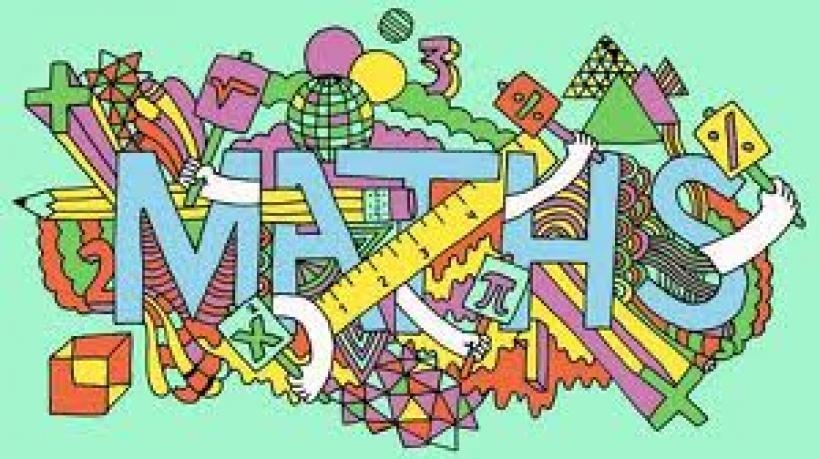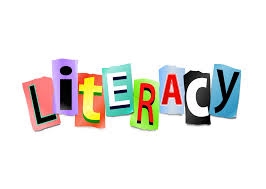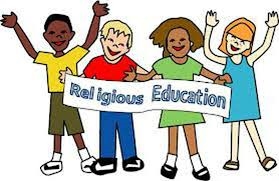
Welcome to Year 3 St Cecilia's website page.
The class teacher is Miss Tanak and our teaching assistant is Mrs Romo.
On this page you will find details on the areas of the curriculum covered during the academic year. .
If you have any questions, please do not hesitate to contact me.

We have discussed the rules that we feel will help the children to learn and work in a happy and positive environment. The children have also discussed the importance of having rules and how they can keep us all safe. Additionally, the rules reflect the ethos and mission statement of St. Mary’s school. These are displayed in our classroom. The school’s rewards and sanctions for good and bad behaviour have also been discussed with the children and displayed in the classroom.

Spellings, X Tables, Literacy, Numeracy, Mental Maths and Handwriting homework will be given every Wednesday to be handed in on Monday of the next week. Your child can hand in their homework earlier if they wish but should continue to go over theor spellings in prepartion for the spelling test on Tuesday. The purpose of the homework is to reinforce learning that has taken place in class. It is also an opportunity for you to see what your child is learning. Each week the work will be explained and we will discuss any questions that they may have. If homework is incomplete, children will be expected to do it during their own time in school. The weekly spelling test will take place during the week to allow your child to practise the spelling pattern that they have focused on in lessons. Please ensure your child has practised and learnt their spellings during the week. Other homework may also be given relating to either RE, Science or history if required.
Now that the children are moving into KS2, a greater emphasis will be placed on being more independent and responsible. Your child’s homework is therefore an opportunity for them to take responsibility themselves; ensuring homework is always completed and handed in on time.
READING
At present your child will still be bringing home a school reading book. Please ensure that your child reads every night in order to develop fluency. Reading records are provided for date, book and comments to be added by an adult. Please ensure that the reading records are signed each time your child is listened to read. Also, if you could spend a little time talking about the text and asking questions to encourage your child to really think about what they have read. This will greatly help their comprehension skills. Evidence shows that good readers are also good spellers and good writers. Reading records will be checked by the class teachers every Monday and we will expect to see five adult signatures showing that you have heard your child read. If children have not read 5 times, they will be given a reading comprehesnion to complete and return the next day.

Feast Day: November 22
Born: around 90 :: Died: around 117
Cecilia was a Roman noblewoman who had given her heart to Christ. Under the rich clothes worn by women of high class, Cecilia wore a rough shirt that caused her suffering. She wanted to be able to offer this sacrifice to Jesus, whose bride she intended to be. But Cecilia's parents gave her in marriage to a young pagan noble, Valerian of Trastevere. Celia is considered the patroness of music because during the wedding celebration, the lovely bride sat apart, singing a hymn of love to God in her heart and praying for his help.
When she and Valerian, her husband, were alone, she gathered up courage and said to him: "I have a secret to tell you. You must know that I have an angel of God watching over me. If you let me keep my promise to be Christ's bride only, my angel will love you as he loves me." Valerian was surprised and said kindly, "Show me this angel. If he comes from God, I will do as you wish." Cecilia said, "If you believe in the one true God and receive the waters of Baptism, then you will see my angel." Valerian went to Bishop Urban and was received with joy. After he had professed his belief in the Christian religion, he was baptized and returned to St. Cecilia. There by the saint's side, the young man saw the splendid angel. The angel placed a crown on each of their heads, and offered Valerian a favor and Valerian asked that his brother also be baptized.
Valerian's brother, Tiburtius, learned of the Christian faith from Cecilia. She spoke so beautifully of Jesus that before long, he too was baptized. Together the two brothers performed many works of charity and mercy, like burying dead Christian martyrs. When they were arrested for being Christians, they went bravely to death rather than give up their new faith in Jesus. St. Cecilia lovingly buried their bodies, before she too was arrested. She even converted the officers who tried to make her sacrifice to false gods. When she was put into a fire, it did not harm her. Then they tried to suffocate her and finally, a man was sent to her house to behead her. He struck her neck three times, but Cecilia did not die immediately. She lay on the floor unable to move. Yet by holding out three fingers of one hand, and one of the other, she still professed her belief in the Blessed Trinity. When her tomb was opened about one thousand five hundred years later in Rome, her body was still found perfect and incorrupt.
THINKING SKILLS
We continue to use De Bono’s Thinking Hats, Habits of Mind and a variety of Thinking Maps to develop the children’s thinking skills. Regular reference is made during lessons to Edward De Bono’s Thinking Hats, Habits of Mind and Thinking Maps. Ask your child to tell you about which one/s they have used in class today!
READING
At present your child will still be bringing home a school reading book. Please ensure that your child reads every night in order to develop fluency. Reading records are provided for date, book and comments to be added by an adult. Please ensure that the reading records are signed each time your child is listened to read. Also, if you could spend a little time talking about the text and asking questions to encourage your child to really think about what they have read. This will greatly help their comprehension skills. Evidence shows that good readers are also good spellers and good writers. Reading records will be checked by the class teachers every Monday and we will expect to see five adult signatures showing that you have heard your child read.

Topics to be covered this year:


Reading – Collaborative reading groups to develop confidence and fluency of reading skills.
Big Writing – develop beginnings to stories, plot developments and endings. Improve use of adjectives. To develop writing different styles e.g. diary entries, recounts, poetry, letters and descriptions.
Grammar, Punctuation – on going revision and consolidation of capital letters, full stops, speech marks, commas, question marks, exclamation marks etc.
Weekly spellings – to develop children’s store of vocabulary. Each week follow a different spelling pattern.
Handwriting – exercises to practise and improve letter formation, presentation. We will focus on writing words which we have been studying for our spelling focus.


Animals Including Humans
In this unit, children will learn to:
-
To identify the important things that need to be considered in order to survive.
-
To classify food and understand a balanced diet
-
To identify the similarities and differences between skeletons and explore their functions
-
To apply knowledge of skeletons to design a skeleton of an animal vertebrate and its skeleton
-
To identify different muscles in our body and what they do
-
To plan a pattern-seeking investigation related to the human body
-
To draw conclusions based on data gathered in an investigation
-
To use different sources of information to plan a menu to meet particular dietary needs
Working Scientifically:
-
To explore
-
To group and classify
-
To use secondary sources of information
-
Look for patterns in data
Rocks:
-
To examine different rocks in order to describe, compare and contrast their properties
-
To sort rocks according to their properties using a key
-
To investigate how rocks change over time
-
To explain that soils are made partly from rock that has broken down into smaller particles and describe some of the properties of different types of soils
-
To investigate and test different kinds of soils to see how quickly water drains through
-
To explore fossils to find out what they are
-
To explain how fossils came to be formed
-
To identify where and how fossils are found
Working Scientifically:
-
To group and classify
-
To ask relevant questions and using different types of scientific enquiries to answer them
-
To observe changes over time
-
To carry out comparative and fair tests
-
To use secondary sources of information
-
Finding things out using secondary sources of information


Earthquakes and Volcanoes:
In this topic children will learn about plate tectonics and look at the new terminology surrounding this unit. They will discover how an earthquake and volcano is formed and how these natural events can have an impact on human life.
Landscapes-Rivers and Mountains:
In this topic, the children will be understanding the physical processing of weathering and how it affects landforms. They will learn about the physical features of a river and locate key mountain ranges of the world using an atlas.

The children will be extending their vocabulary, enabling them to talk particularly about: members of the family, parts of the body; the weather; vocabulary connected with school work and the curriculum.

Galilee to Jerusalem
In this branch, pupils will encounter the Gospel of St Luke. Pupils will learn that Luke’s gospel is divided into seven books. The first contains the birth and infancy narratives, the last describes Jesus’ passion, death, and resurrection, and the five books in between give an account of the life and ministry of Jesus. In parts of this gospel, St Luke gathers similar stories and accounts as they all point to the same message. The scriptural texts studied in this branch draw from two sections: a narrative section on ten miracles and a sermon on parables. Jesus may not have performed ten miracles in sequence or told parables one after the other, but St Matthew puts them together as they all indicate a greater truth about building the Kingdom of God.
Desert to Garden
Pupils will discuss Lent, Holy Week, and Easter in other areas of school life and will be invited to participate in the prayer and Liturgy of school and parish life. Jesus feeding a multitude is the only miracle (apart from the Resurrection) recorded in all four gospels and pupils will learn Jesus’ words and actions are important as they foreshadow what will happen at the Last Supper. Pupils will understand that Jesus reaches out with compassion to feed the hungry.
Following on from focusing on the Liturgy of the Word in the ‘Prophecy and Promise’ branch, pupils will focus on the second part of the Mass, the Liturgy of the Eucharist. In this branch, they may need to revisit the Mass as a whole and recognise ‘The Holy Mass is a miracle: we can be present at Jesus’ death and Resurrection. With Jesus Christ, our risen Lord, we are celebrating the big feast of thanksgiving’

Online Safety:
-
Differentiate between fact, opinion and belief online.
-
Explain how to deal with upsetting online content.
-
Recognise that digital devices communicate with each other to share personal information.
-
Explain what social media platforms are used for.
-
Recognise why social media platforms are age-restricted.
Creating Media:
The children will be learning to:
-
Describe the purpose of a trailer.
-
Create a storyboard for a book trailer.
-
Consider camera angles when taking photos or videos.
-
Import videos and photos into film editing software.
-
Record sounds and add these to a video.
-
Add text to a video.
-
Incorporate transitions between images.
-
Evaluate their own and others’ trailers.

Earthquakes and Volcanoes:
In this unit, the children will explore the artwork from different artists who were inspired by the effects of earthquakes and volcanoes. They will use different media such as: paint, water colours and clay to create pieces of art inspired by volcanoes. This unit links to the Geography unit of Earthquakes and Volcanoes so the children will have a good background understanding of the artist’s inspiration.
Myths and Legends:
In this unit, the children will be understanding how myths and legends have inspired the work of artists. They will be finding out what inspired Peer Paul Rubens as an artist and try to imitate his techniques.

Electronic Charms
We will be understanding the impact of the digital revolution in the world of (D&T) product design. We will write a program to initiate a flashing LED panel after button press and/or automatically initiate using the Micro: bit light sensing, as part of an eCharm. The children will then create and decorate a foam pouch for the eCharm, using a template. Finally they will design a display badge and/or stand using CAD (computer-aided design) software for an eCharm product.
Earing Seasinally
The children will learn that climate affects food growth. We will learn the advantages of eating seasonal foods grown in the UK. The children then create a recipe that is healthy and nutritious using seasonal vegetables and fruits. Finally, the children learn how to safely follow a recipe.
PSHE/ CITIZENSHIP & RSE EDUCATION:
Information from the Ten Ten Resources:
Religious Understanding
This unit tells the parable of The Prodigal Son, showing that God loves us, and nothing we can do will stop Him from loving us. Children will also learn about different types of sin, and the importance of forgiveness in relationships.
Personal Relationships
This unit helps the children to develop a more complex appreciation of different family structures, develop healthy relationships with family and friends and learn some strategies to use when relationships become difficult. Teaching also covers how to recognise discrimination and bullying, both physical and emotional. Children will learn strategies to develop resilience and resist pressure.
Keeping Safe
This unit incorporates some of the excellent NSPCC Share Aware resources, as well as teaching on bullying and physical, emotional and sexual abuse through a series of animated stories. Through the animated expert Dr Datfa, children will also learn in greater depth about the effects of drugs, alcohol and tobacco and how to make good choices concerning these as they get older. The final session of the Module explores in more detail what to do in emergency situations.
MUSIC:
This term the children will be learning to use percussion instruments to create a rhythmic pattern. They will be building up their skills each week so that they will eventually be able to create a collaborative piece using the percussion instruments.
This term the children will also be learning to play the recorder during their lessons, to include:
-
history of the instrument;
-
care of the instrument;
-
reading music notation;
-
writing music notation.
A tutor from the EASS will be coming to teach the children.
We look forward to working in partnership with you and your child this year. Please do not hesitate to contact us if you wish to discuss anything.
Thank you in advance for your support,
Miss Tanak